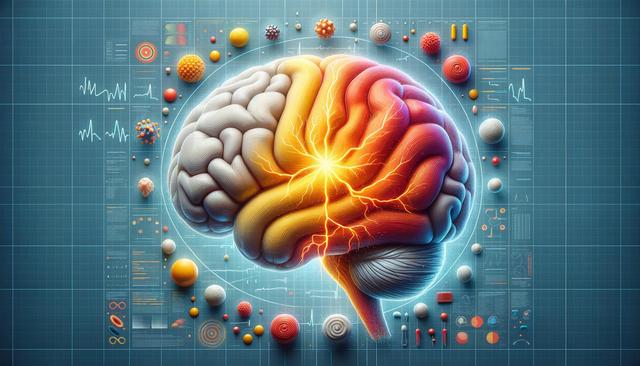Recognizing the Warning Signs of a Stroke
Recognizing a stroke early can be life-saving, especially when every second counts. The top 3 stroke symptoms that require immediate action are sudden numbness or weakness in the face, arm, or leg (especially on one side of the body), confusion or trouble speaking, and sudden difficulty seeing in one or both eyes. These symptoms often appear suddenly and require urgent medical attention. Knowing how to recognize a minor stroke before it worsens is equally crucial. Minor strokes, or transient ischemic attacks (TIAs), may present with brief episodes of weakness, slurred speech, or dizziness that resolve quickly. However, they are serious warnings and should never be ignored.
Other signs that warrant immediate medical attention include:
- Loss of balance or coordination
- Sudden severe headache with no known cause
- Trouble walking or understanding speech
When these symptoms occur, knowing when to seek urgent brain imaging can be the difference between recovery and long-term disability. Imaging like a CT scan or MRI helps doctors determine the type and location of the stroke to guide treatment effectively.
Risk Factors That Increase Stroke Likelihood
Understanding what increases the risk of stroke can help individuals take proactive steps toward prevention. There are several risk factors that increase stroke likelihood, many of which are controllable through lifestyle adjustments or medical intervention. Some of the most impactful include:
- High blood pressure
- Diabetes
- High cholesterol
- Smoking and excessive alcohol use
- Obesity and physical inactivity
In addition to these, certain medical conditions such as atrial fibrillation or carotid artery disease significantly raise stroke risk. Age also plays a role, with individuals over 55 at greater risk. Family history and genetics can contribute as well. Managing these factors through regular check-ups, medication adherence, and healthy habits can lower the likelihood of stroke substantially.
Different Types of Stroke and Recovery Timelines
Strokes are not one-size-fits-all; they vary in type and severity, which affects recovery timelines for different stroke types. The three primary types are ischemic stroke, hemorrhagic stroke, and transient ischemic attack (TIA). Ischemic strokes, caused by a blockage in an artery, are the most common and often have a gradual recovery period depending on the brain area affected. Hemorrhagic strokes, resulting from bleeding in the brain, typically require a longer recovery due to the complexity of the damage.
Recovery is highly individual, but general timelines might include:
- Initial hospital stay: 3–7 days
- Rehabilitation phase: weeks to months
- Long-term adaptation: ongoing, possibly lifelong
TIAs usually resolve within minutes to hours but signal a high risk for future strokes. Even after a minor stroke, rehabilitation is often recommended to prevent recurrence and restore function.
Rehabilitation and Daily Exercises for Post Stroke Recovery
Post-stroke rehabilitation plays a vital role in helping survivors regain independence. A key part of this process is engaging in regular, targeted physical activity. Daily exercises for post stroke recovery should be tailored to the individual’s abilities and recovery stage. These exercises not only improve physical strength but also support cognitive and emotional healing.
Examples of effective daily exercises include:
- Range-of-motion stretches
- Balance and coordination drills
- Hand and finger dexterity activities
- Walking or assisted treadmill training
In addition to physical therapy, speech and occupational therapies are often part of the recovery plan. Patients are encouraged to work closely with a rehabilitation team to set realistic goals and track progress. Consistency and patience are key, as recovery can be slow but meaningful with the right support.
When to Seek Medical Help and the Importance of Monitoring
Timely intervention is crucial in all aspects of stroke care. Knowing when to seek urgent brain imaging is essential in both the immediate and post-stroke phases. Any recurrence of symptoms—such as sudden confusion, weakness, or visual disturbances—demands prompt evaluation. Regular follow-ups with healthcare providers allow for the monitoring of blood pressure, cholesterol, and other health indicators, which are essential in preventing future strokes.
Family members and caregivers should also stay informed about the warning signs and work with healthcare professionals to create a supportive environment. Using tools and technology like medication reminders, mobility aids, and home safety modifications can further aid in recovery and reduce risks.
Ultimately, stroke management is a continuous process involving awareness, prevention, and active rehabilitation. Staying informed and proactive greatly enhances outcomes for those affected.
Conclusion
Understanding stroke involves recognizing urgent symptoms, managing risk factors, and committing to a structured recovery process. Whether you’re concerned about how to recognize a minor stroke before it worsens or looking for effective daily exercises for post stroke recovery, the key lies in early action and consistent care. By staying alert to the top 3 stroke symptoms that require immediate action and knowing when to seek urgent brain imaging, individuals can significantly improve their chances of recovery and reduce long-term complications. Taking small, informed steps today can help safeguard your health and well-being tomorrow.




Leave a Reply